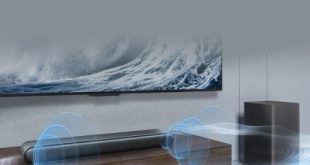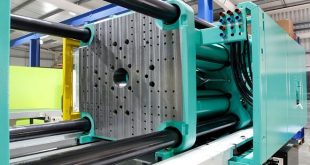QLED is one of the relatively new topics in television technology, actively promoted and advertised by Samsung. It is, according to marketers, a new technology that provides “100% color volume measured by the DCI-P3 standard. What is this — a marketing ploy or a useful thing to get a quality image? And what’s worse than, for example, the NanoCell promoted by LG?
To begin with, saying that QLED is a “new technology” is somewhat of a marketing ploy. It is a developed and improved technology of the same LCD screens. And by and large, NanoCell from LG or Triluminos from Sony are similar technology backlighting LCD. Nevertheless, when marketers talk about improving the color range, brightness, and overall image quality — they are also right. QLED backlit screen for the average buyer is interesting and attractive with a juicy, colorful picture. How it manages to get it, we are now going to figure out.
How does the regular LED backlighting of the LCD screen work
To understand what is good about QLED, we must first understand how a conventional LCD screen works.
The usual LCD screen is a layered structure, the main component of which is liquid crystals.
These crystals are small: one element is one pixel. Each pixel element has three subpixels with different light filters — red, blue, and green. Each light filter is controlled by its transistor, allowing the light flux to pass through at a certain brightness. The combination of three light streams of different brightness and color forms the color of each specific pixel.
Let’s compare quantum dot technology in QLED and NanoCell.
Working principle of QLED backlight
When creating the new backlight system, engineers changed the way the light is transmitted from the source (LEDs) to the liquid crystals. With the new method appeared the abbreviation QLED — the marketing name for the new technology of illumination. The first letter in the new name, coined by Samsung marketers, appeared from the phrase “Quantum Dot”. They are the main feature of the new design. It appeared as an additional “intermediary” in the transfer of light from the source to the LCD matrix. And this “intermediary” – quantum dots — also emits light.
QLED backlight works on the following principle.
An LED backlight located at the back of the screen emits a constant flux of light. This flux is usually blue.
The light flux is delivered to a layer containing quantum dots. The peculiarity of quantum dots is that under the influence of light, they are excited and also begin to emit light of a certain wavelength (color). The color of the light emitted by a quantum dot depends on its size. For example, a dot of size 2 nm glows blue, 3 nm glows green, and 6 nm glows red. The quantum dot layer uses elements that emit green and red.
The light streams are polarized and mixed to form blue, green, and red into white, which is fed to the LCD matrix.
Then the LCD matrix, like the LED screen, forms the color of each pixel using three subpixels and control transistors. And the viewer sees a brighter, juicier image.
It would seem that the differences from the classic technology are not so great — the principle of the screen remains the same. But there is an important difference — the white light of backlighting does not pass through the filters and, accordingly, does not lose intensity. Instead, additional luminous flux is added. This has a positive effect on the range of brightness adjustment and color rendering quality. The image becomes much brighter.
It is not for nothing that marketers are so fond of talking about HDR mode in QLED TVs and the high level of detail in dark or overly bright scenes. This is true, because when there is more light, there is something to adjust, forming a beautiful picture.
What QLED TVs are good for the average viewer
All the intricacies of the passage of light are interesting for the average viewer in the first place because of what he will get, having paid a fairly large sum for a new TV. Is it worth spending on a QLED TV?
There are reasons to choose a TV with a quantum dot screen.
- They support HDR. And the new models are HDR 10+ compliant, which means they can adjust the brightness and contrast to each scene, regardless of whether it’s dark or bright, providing maximum detail.
• They provide extended viewing angles. True, the QLED backlight does not directly affect the result. But it is used in expensive TVs, in the screens of which Samsung engineers also apply the technology of distributing the light flux in different directions with the same power.
• They provide high-quality black color. Here again, the main role is played not by QLED backlight, and additional technology. Specifically — additional anti-reflective coating.
• Gamers will be interested in the presence of the TV technology FreeSync, which provides minimal image delay and smoothness in dynamic scenes.
 Naa Songs
Naa Songs




